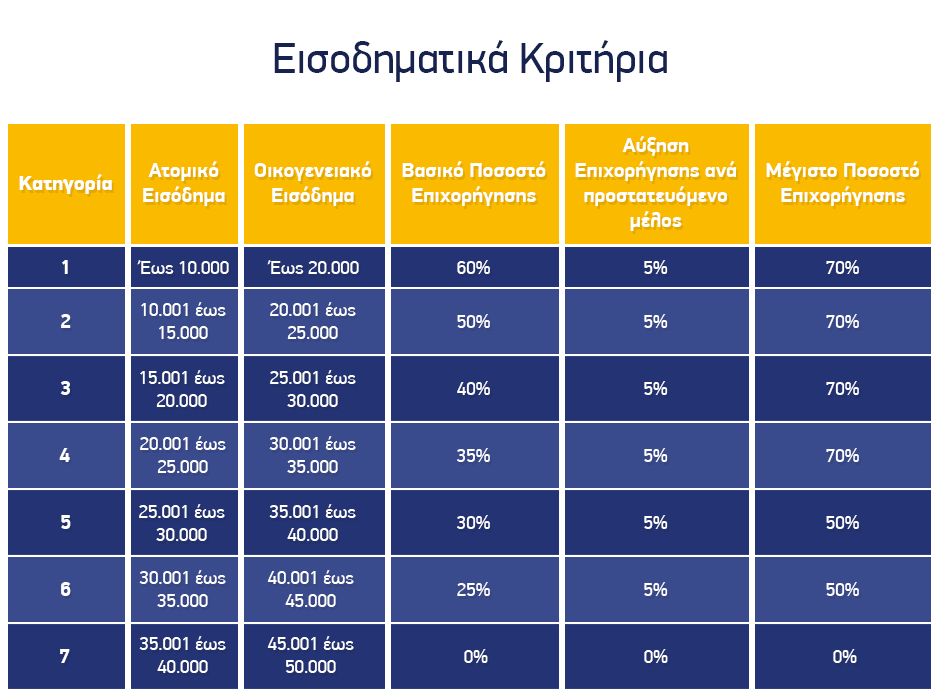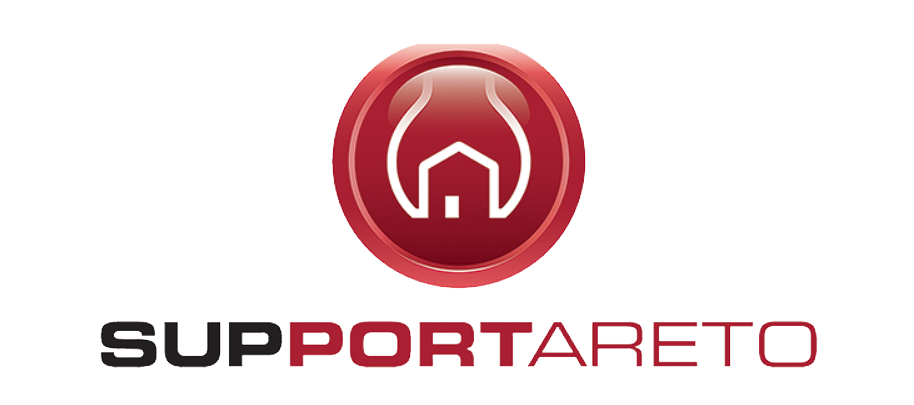The programme "Home Economies" 2017 is conducted for the second time in Greece and is co-funded by public and private bodies. Its purpose is to mobilize citizens to upgrade the energy efficiency of their home.
The Programme covers all thirteen (13) regions of the country. Η total public expenditure of the programme, amounting to 396 million €.
An energy upgraded home spends significantly less on heating in winter and cooling in summer, increasing its value.
Below you can find answers to some basic questions about your participation in the programme:
What are the income criteria that determine the size of the subsidy?
For participation in the Home Savings 2017 programme, individual and family income are classified into 7 categories. See the income criteria in the table below.
What works are included in the Home Savings programme?
- Replacement of frames (frames / glazing) and installation of shading systems. Due to the programme's requirement for energy efficiency upgrading, the intervention concerns mainly, but not exclusively, thermal insulating/thermally broken frames with double glazing. The replacement of the glazing alone is also eligible provided that an energy upgrade is achieved. The replacement of a front door in a single-family house and of staircase and skylight frames in a multi-family house is also eligible. However, 'openings' to the interior of the building, whether heated or not (e.g. apartment door) are not included. This category also includes the installation of external shades and movable protective covers on openings (shutters, blinds).
- Installation of thermal insulation in the building envelope including the roof/roof and the pitch. The installation of internal thermal insulation is also eligible in this category when the installation of external thermal insulation is technically impossible or not allowed by the legislation (e.g. listed buildings, traditional settlements).
- Upgrade of the heating system and hot water supply system.
In this category are eligible:
- The installation of a new or replacement boiler and/or boiler system with a new oil or natural gas system (central or individual) or a system that operates mainly with the use of renewable energy sources, RES (e.g. biomass boiler, heat pumps, solar thermal systems, etc.) or a high efficiency combined heat and power (CHP) system. The installation/replacement concerns the electromechanical equipment of the boiler room as a whole and the distribution network (automation, circulators, chimney, replacement or insulation of pipes, etc.). Expenditure on the oil tank and terminal heat recovery units (radiators, underfloor system, etc.) is not eligible.
- The installation of automatic control devices for the operation of the heating system, such as timers, compensation and/or hydraulic balance automation for the regulation of partial loads (three- or four-way electrovalves, circulator speed regulators, etc.), room thermostats, thermostatic radiator heads, etc., including heat metering systems for the allocation of heating costs.
- The installation of solar systems for the supply of hot water (collector, water storage tank, support base, piping, etc.).
Which homes can be included in the programme?
The "Energy Efficiency at Home 2017" programme applies to single-family houses, multi-family houses and individual apartments, with multi-family houses being eligible only as a whole and not as individual apartments.
In order for a multifamily dwelling to be considered as an eligible dwelling, it must meet certain requirements. At least 50% of the building's properties must be used for residential purposes. Therefore, if part of the multifamily building is used as a commercial store, it is not considered property used for residential purposes.
Houses should follow the following criteria:
- They are located in areas with a zone price lower or equal to 2.100 €/sq.m., as it has been established until 31.12.2009.
- They carry a building permit. In case the owner does not have a building permit, a legal document must be presented, showing that the building exists legally. In cases where the building permit has been lost or the relevant records on the basis of which the above-mentioned legal document can be issued are not readily available, the permit and the legal document may be presented to the financial institution before the loan agreement is signed.
- They have been classified on the basis of the Energy Performance Certificate (EPC) in a category lower than or equal to D.
- They have not been deemed demolishable.
Is the subsidy rate increased if there are dependent members in the family?
If there are dependants in the family, the subsidy rate can be increased significantly. In particular, there is a 5% increase in the subsidy for each dependent member. If there is one thing to note in this regard, it is the fact that in the first 4 categories the final subsidy rate cannot exceed 70%. On the other hand, in categories 5 and 6 the final rate cannot exceed 50%. The last category, as mentioned above, is not eligible for a subsidy, even if there are dependants.
What additional requirements must apartment buildings as a whole building meet to be eligible for funding?
- At least 50% of the properties (apartments and non-apartments) to be used as a residence. However, properties that are not used for residential purposes (e.g., a shop on the ground floor of a building) are not designated as eligible.
- A relevant application is submitted by a representative of all the owners of the apartments with information on the satisfaction of the eligibility criteria of the building, as well as individual applications from each of the owners wishing to join the Programme.
- An Energy Performance Certificate is submitted for the entire part of the building used as a residence.
How can I apply to join the programme?
Applications for participation in the programme will be made by submitting an application form on a special online platform. The application will include several steps that will be taken over time. First, the applicant will have to apply and indicate the banking institution from which he/she intends to obtain a loan, if of course he/she intends to obtain a loan.
Then, the creditworthiness of the person is checked, as is done for every loan application. Once approved by the banking institution, the individual will be required to obtain a first Energy Performance Certificate for the home from an energy inspector.
The person concerned should then add to the application the information obtained from the inspection. He will also need to list the changes, or work to be done to the home and the cost of the work. If the application is approved, then a loan is obtained, or a declaration of acceptance, so that the work can be done on the house.
When the work is completed, another Energy Performance Certificate will be issued.
Finally, it is checked whether there has been sufficient energy upgrading due to the changes/works so that the applicant can receive the grant money.
Is it necessary to take a loan to complete the amount of money?
Beneficiaries of the "Home Savings 2017" programme will receive a sum of money as a subsidy, but they will have to supplement the money declared in the application with their own funds. This means that beneficiaries will be able to supplement the amount of money either by taking out a bank loan or with money they already have.
Here is an example:
Let's assume you are in category 1. Your individual annual income is no more than €10,000 and your family income is no more than €20,000.
If you live in a house of 100 square metres, you can apply for work worth €25,000 (€250 per square metre).
If there are no dependants in the home, then you are entitled to a grant of 60%.
You are therefore entitled to a subsidy of €15,000. The remaining €10,000 will have to be paid by you, either from money you already have or through a bank loan.



